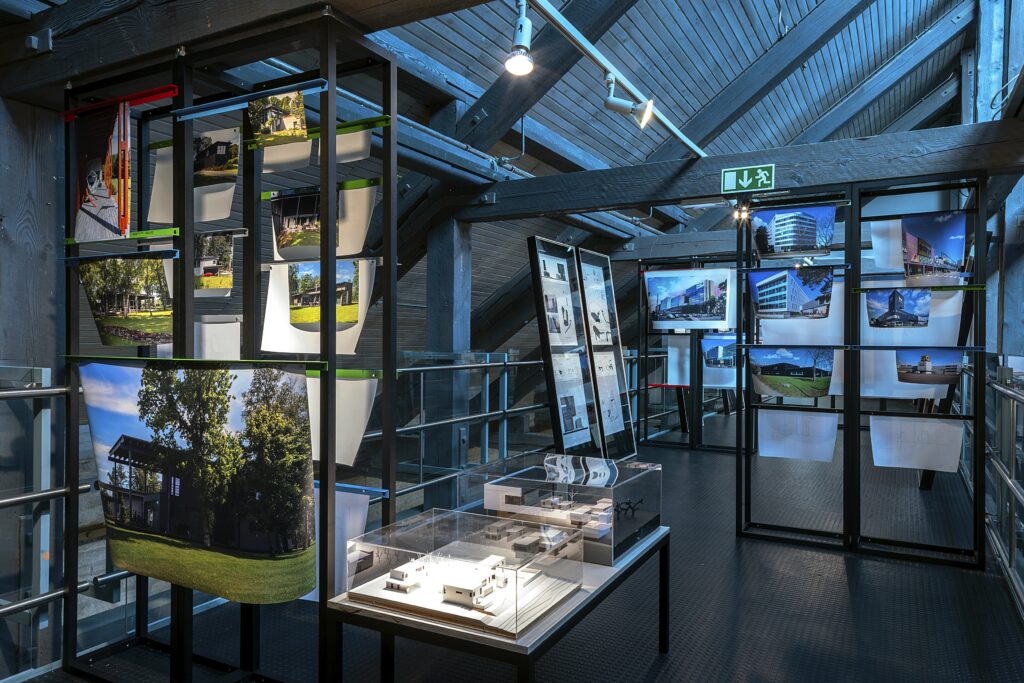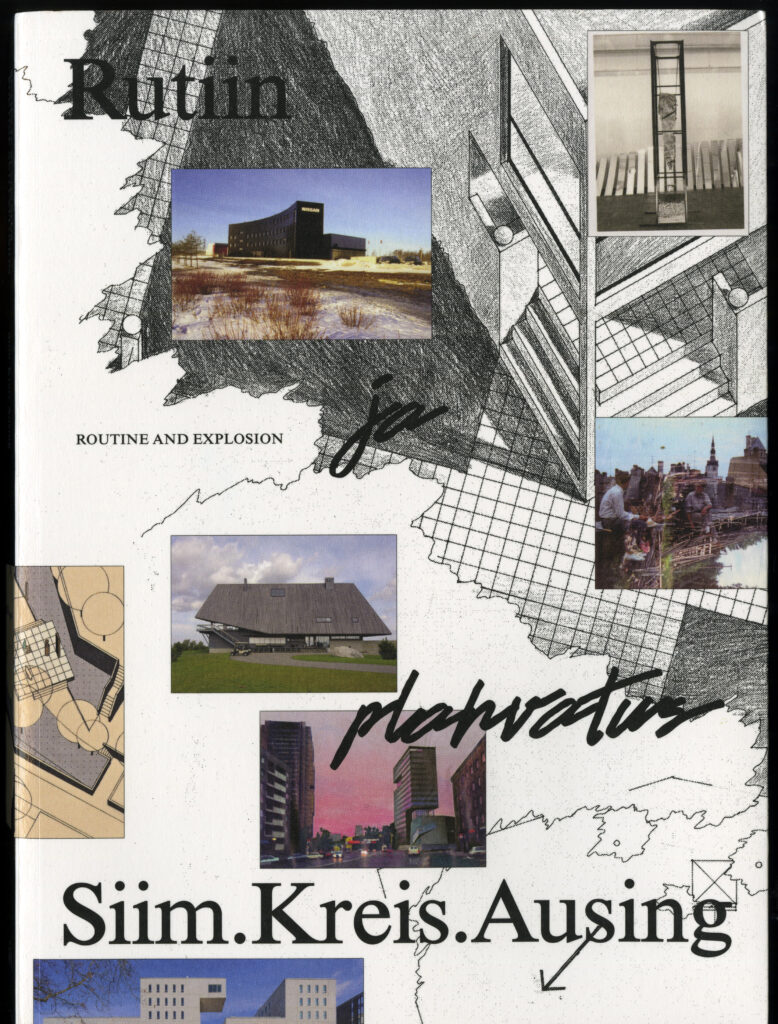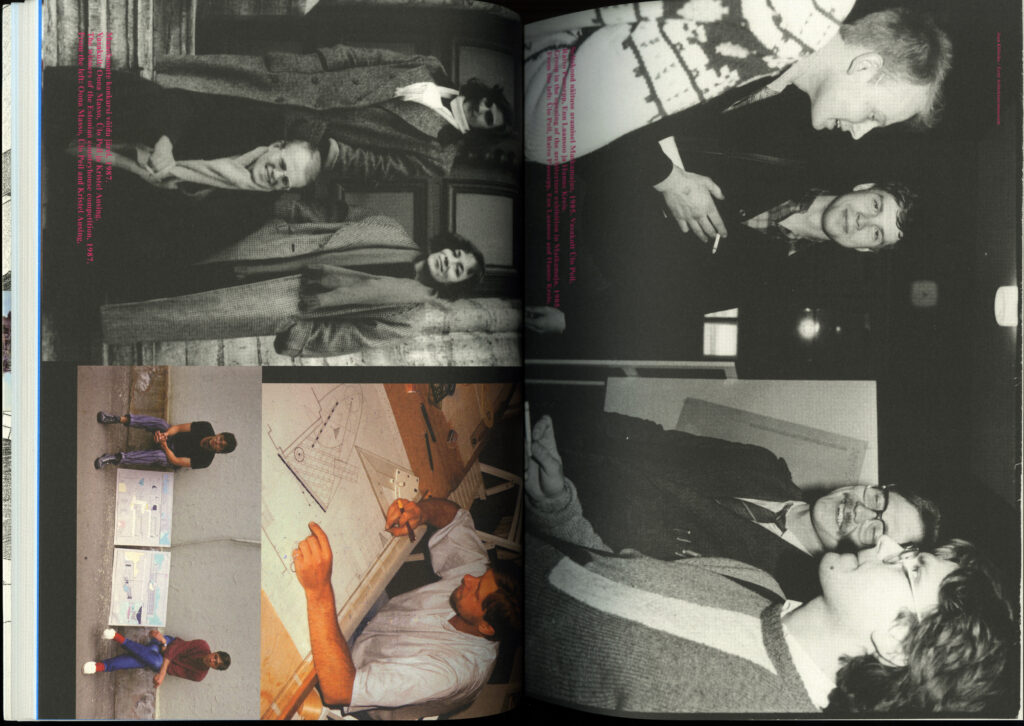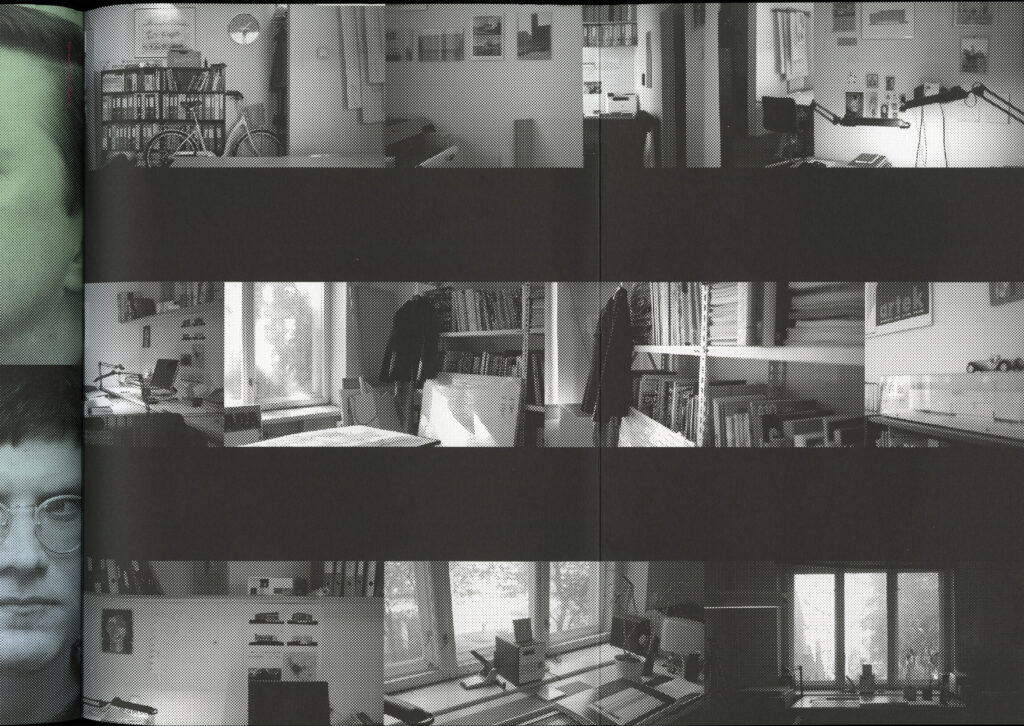Architects Andres Siim (1962–2020) and Hanno Kreis (1962–2011) were a brilliant tandem of their generation, founders of Siim & Kreis Architecture Studio together with Kristel Ausing (1964) in 1993. They started in the new reconstruction period when the architect’s main job could have been designing kiosks or market stalls, but on paper, they designed a new dense city and imagined a suitable form for a capitalist city using examples from the West. They managed to submit about 70 entries, most of them in open architecture competitions, and received some sort of an award in about half of them. International attention was gained early on when Andres Siim, along with Vilen Künnapu and Ain Padrik, won the second prize at the West Coast Gateway Architecture Competition in Los Angeles in 1988. A year later, Siim won the competition for the Architects’ House planned in Tallinn Old Town, followed by wins as a team in competitions for the Liberty Square, Hansapank, the combined building of Tallinn Music High School and Georg Ots Tallinn Music College, and the new building for Tallinn City Theatre – all unfortunately never built. The range of the works by Siim & Kreis aptly reflects the new types of building. So they designed commercial and retail buildings, offices, car dealerships and tool shops – the buildings that have had the greatest impact on our urban landscape. The Nissan car dealership, completed in Lasnamäe in 1994, was the first building of its kind in Estonia and immediately won the first annual award of the newly established Architecture Endowment of the Cultural Endowment of Estonia. The exhibition and the accompanying book provide a good picture of the work generated by a typical 2-3-person architecture office in Estonia and the construction layers gradually emerging over the past 30 years that continue to have a strong impact on our spatial culture.


The year of birth matters, and the time in which a creative person is born matters. Those born in 1960s who started their career while their contemporary Mart Laar became the prime minister and the society was gradually transferring to market economy were described by sociologists as the winners’ generation. Thinking of the first players of the time born in early 1960s, we could in addition to Andres Siim and Hanno Kreis name also architects and interior architects Emil Urbel, Ülo Peil, Peeter Pere, Urmas Muru, Kalle Vellevoog, Taso Mähar, Tea Tammelaan, Tüüne-Kristin Vaikla, Eero Jürgenson, Uko Künnap … Naturally other artists born around the same time such as Jaan Toomik, Siim Tanel Annus, Kaido Ole, Kai Kaljo, Liina Siib, Mall Nukke, Peeter Laurits, Raul Rajangu … Rühm T represented something similar in art, uniting the people of various creative fields – literature, music – and thus had a strong platform. (...) It was the time of happenings, performances and installations, romantic nationalism and punk movement, while in architecture the movement was reflected in postmodernism as well as in rational minimalist neomodernism.
Piret Lindpere. Twenty-first-century Architects – Sirp, 2022, 5.08.




The impetus for compiling the exhibition came from the archives of the office as left on the shelves, drawers and computers in their Lauteri Street office. Carefully compiled folders of school works and competition entries, tracing paper with early pre-computer drawings, pretty cut-and-paste pictures for competitions – visualisation techniques that have been forgotten due to the technological revolution are now tempting material for exhibitions. The exhibition and the book feature the best works of their rich archive and photos of the completed works but also the social life around them – as a keen photographer, Andres Siim left behind hundreds of transparencies of their friends, trips, parties and buildings they had seen. The mentality of the transitional period of the late 1980s, boredom with the old traditions and the desire for the new age are vividly described in the book by their friend Emil Urbel. In her article, Karin Paulus sums up the creative work of the office highlighting its correspondence with the changing times. It was attempted to capture the stylistics of the age also in the design of the book and the exhibition with both giving priority to the works – drawings featuring craftsmanship and clear vision that can be rare in Estonia.



















































































































































































































